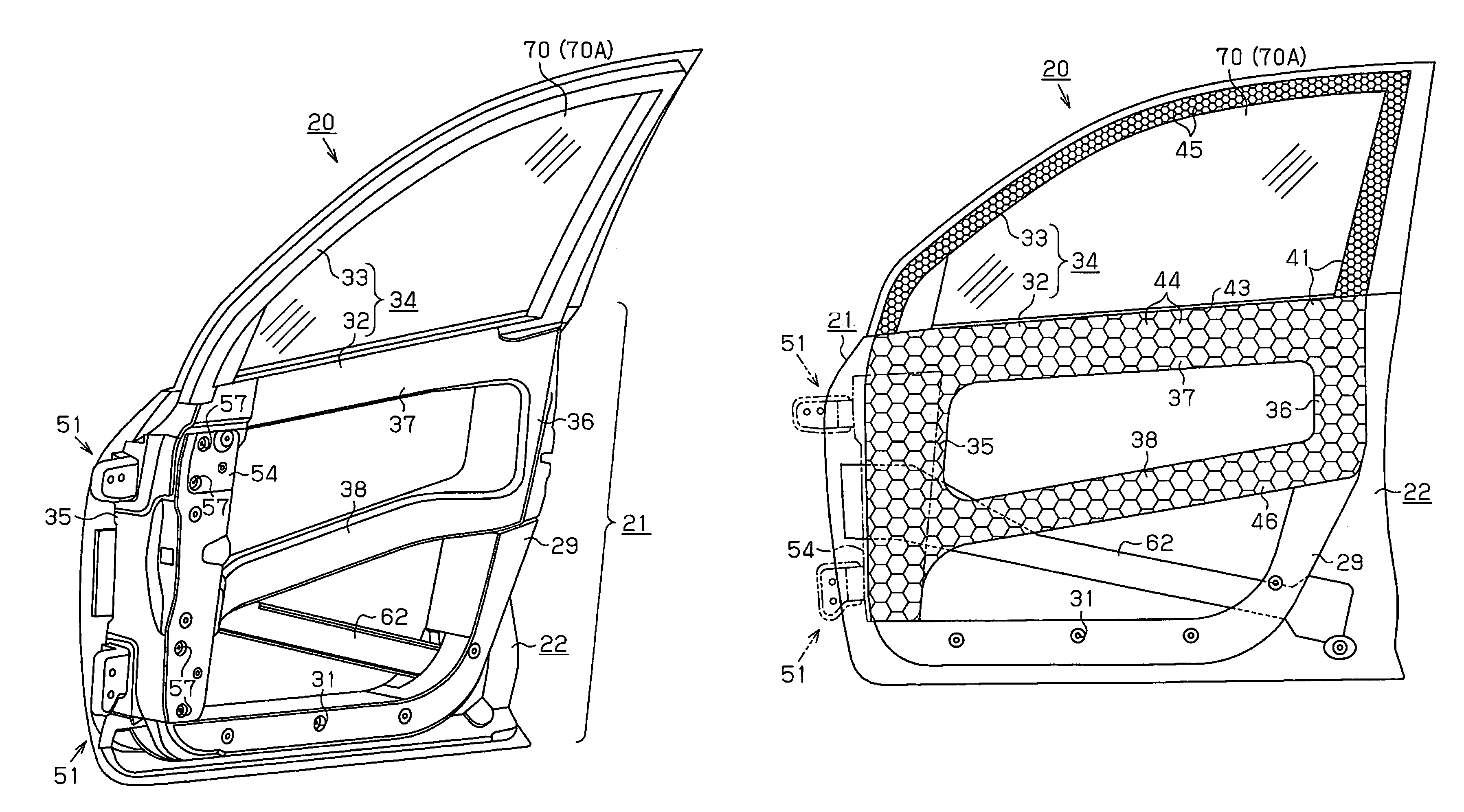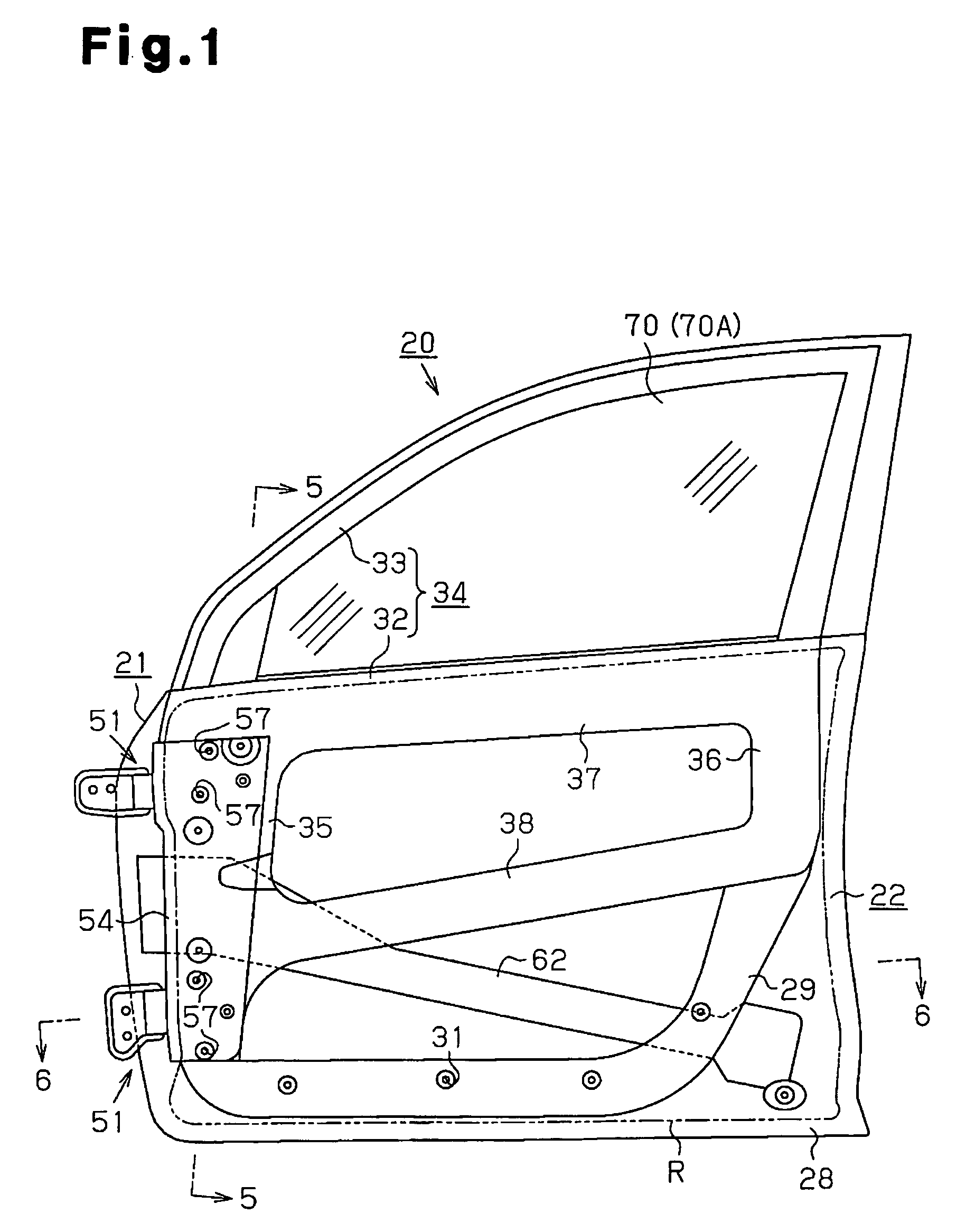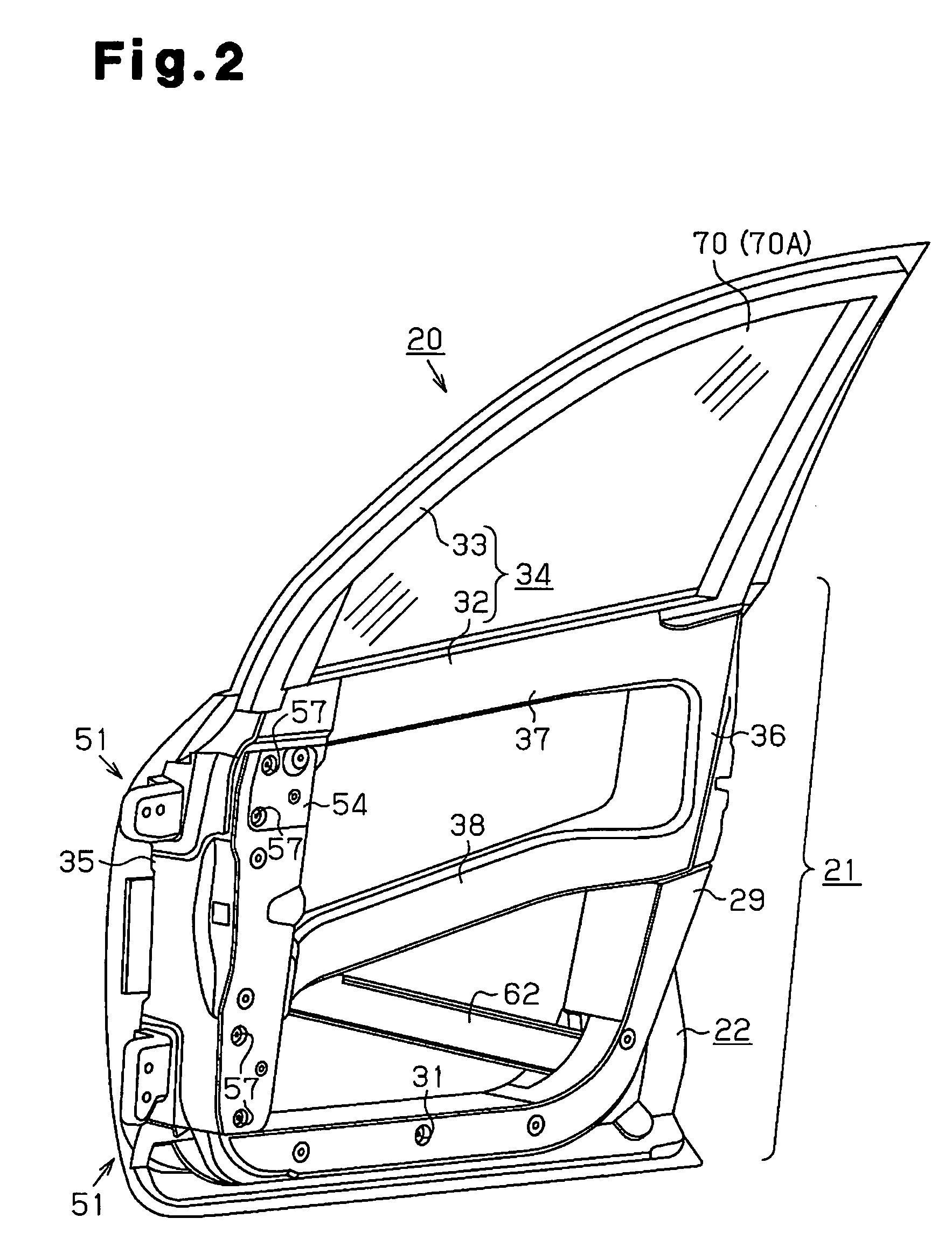Vehicle door
a technology for vehicles and doors, applied in the field of vehicles, can solve the problems of insufficient reduction of the weight of the entire vehicle door including the window glass, insufficient consideration of improving the strength, and insufficient reduction of the energy required, and achieve the effect of high strength
- Summary
- Abstract
- Description
- Claims
- Application Information
AI Technical Summary
Benefits of technology
Problems solved by technology
Method used
Image
Examples
first embodiment
[0032]A vehicle front door according to a first embodiment of the present invention will now be described with reference to FIGS. 1 to 9.
[0033]As shown by alternate long and two short dashes lines in FIGS. 5 and 6, an opening 12 for allowing an occupant to enter and exit the vehicle is formed beside each of the front seats (the driver's seat and the front passenger seat) in the body 11 of a vehicle. A front door 20 according to the first embodiment is attached to the vehicle to selectively open and close the opening 12. Specifically, the front door 20 is selectively brought closer to and moved away from the opening 12, so as to selectively close and open the opening 12.
[0034]The front door 20 includes a door main body 21 forming a main part of the front door 20 and a window glass 70 attached to the door main body 21. The window glass 70 is made of a transparent synthetic resin such as a polycarbonate resin, and is lighter than ones made of inorganic materials. Unlike a common front ...
second embodiment
[0082]A front door according to a second embodiment of the present invention will now be described with reference to FIGS. 10 and 11. The front door of the second embodiment has the following features in addition to those of the first embodiment.
[0083]FIG. 11 is an enlarged view illustrating section Y in FIG. 5. As shown in FIG. 11, in the base portion 32 of the second door component 34, the sealing plate portions 46, 47 of the honeycomb structural body 41 are located on both sides (the outer side and the inner side) of the honeycomb portion 42 to seal the cells 44. The honeycomb portion 42 and the inner side sealing plate portion 47 is integrally molded by injection molding. The outer side sealing plate portion 46 is formed separately from the honeycomb portion 42 and is joined to the honeycomb portion 42 by welding or adhesion.
[0084]In contrast, although the honeycomb structural body 41 of the window frame portion 33 has the honeycomb portion 42 and the inner side sealing plate po...
third embodiment
[0096]A third embodiment of the present invention will now be described with reference to FIGS. 12 to 16.
[0097]According to the third embodiment, a window glass 70 is not fixed to a door main body 21 including a window frame portion 33 as shown in FIGS. 13 to 16. The window glass 70 is selectively lifted and lowered by a window regulator (not shown). In this regard, the third embodiment is significantly different from the first and second embodiments, in which the window glass 70 is fixed to the door main body 21 and is not lifted or lowered. An accommodation space 80 for accommodating the window glass 70 is defined between the first door component 22 and the second door component 34. Although not illustrated in FIG. 13 or 16, the first door component 22 and the second door component 34 are joined to each other, for example, by welding or adhesion, at portions of the adjacent sealing plate portions 28, 46 of the honeycomb structural bodies 23, 41 of the door components 22, 34 except...
PUM
 Login to View More
Login to View More Abstract
Description
Claims
Application Information
 Login to View More
Login to View More - R&D
- Intellectual Property
- Life Sciences
- Materials
- Tech Scout
- Unparalleled Data Quality
- Higher Quality Content
- 60% Fewer Hallucinations
Browse by: Latest US Patents, China's latest patents, Technical Efficacy Thesaurus, Application Domain, Technology Topic, Popular Technical Reports.
© 2025 PatSnap. All rights reserved.Legal|Privacy policy|Modern Slavery Act Transparency Statement|Sitemap|About US| Contact US: help@patsnap.com



